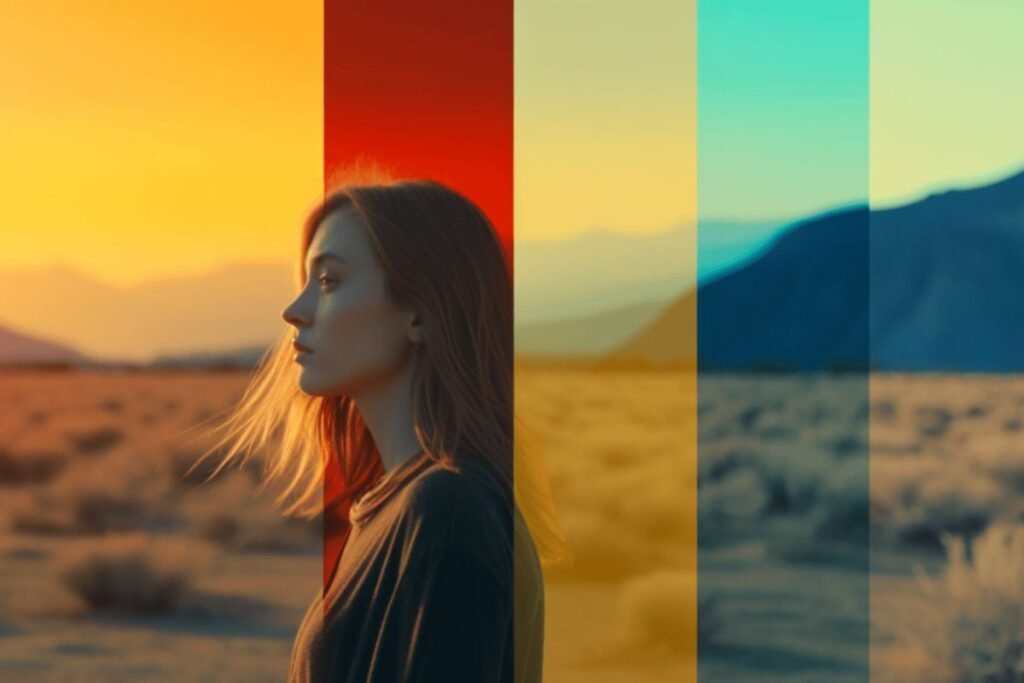Color grading is a powerful tool in the world of video production. It’s the process of enhancing and correcting the colors in a video to create a specific mood or aesthetic. While it might seem like a subtle detail, color grading plays a crucial role in visual storytelling, influencing how viewers perceive the story and the emotions it evokes. In this blog, we’ll explore the art and science of color grading, how it impacts the narrative, and why it’s an essential part of the post-production process.
The Basics of Color Grading:
Color grading is the final step in the color correction process. While color correction involves adjusting the colors to achieve a natural and balanced look, color grading is where creative choices are made to enhance the visual storytelling. This might involve altering the color palette to create a specific mood, adding a color tint to evoke a particular emotion, or using color contrasts to draw attention to certain elements in the frame. A skilled colorist uses a combination of software tools and artistic judgment to achieve the desired look.
Setting the Mood with Color:
One of the most important functions of color grading is setting the mood for a scene. Different colors can evoke different emotions and create specific atmospheres. For example, warm colors like red, orange, and yellow can create a sense of warmth, comfort, or intensity, while cool colors like blue, green, and purple can evoke feelings of calm, sadness, or mystery. By carefully selecting the color palette for each scene, a colorist can influence how the audience feels about what they’re watching.
Enhancing the Narrative:
Color grading isn’t just about making a video look good; it’s also about enhancing the narrative. The colors used in a video can reinforce the themes and messages of the story. For example, a video with a dystopian setting might use desaturated colors and high contrast to create a bleak and oppressive atmosphere. On the other hand, a romantic film might use soft, pastel colors to create a dreamy and nostalgic mood. By aligning the color palette with the story, color grading can make the narrative more impactful and memorable.
Creating Visual Consistency:
In addition to setting the mood and enhancing the narrative, color grading also helps create visual consistency across a video. This is particularly important for projects that involve multiple locations, lighting conditions, or cameras. Without color grading, the footage might look disjointed and inconsistent, which can be distracting for viewers. A skilled colorist can adjust the colors to ensure that all the footage matches and flows seamlessly from one scene to the next.
The Psychology of Color:
The impact of color on the viewer’s psyche is well-documented in both art and psychology. Different colors can trigger different emotional responses, often subconsciously. For example, red is associated with passion, danger, and excitement, while blue is associated with calm, trust, and sadness. By understanding the psychology of color, colorists can make strategic choices that influence how the audience reacts to the video. This can be particularly powerful in marketing and advertising, where the goal is to elicit a specific response from the viewer.
Color Grading Techniques:
There are several techniques that colorists use to achieve the desired look in a video. These include:
- Primary Color Correction: Adjusting the overall color balance, contrast, and brightness of the footage.
- Secondary Color Correction: Making selective adjustments to specific areas or colors within the frame.
- Color Matching: Ensuring that the colors are consistent across different shots or scenes.
- Looks and LUTs (Look-Up Tables): Applying pre-designed color grading presets to achieve a specific style or mood. Each of these techniques requires a deep understanding of both the technical and artistic aspects of color grading.
The Role of Technology in Color Grading:
Advancements in technology have revolutionized the color grading process. Modern color grading software offers a wide range of tools and features that allow colorists to make precise adjustments and experiment with different looks. Some of the most popular color grading software includes DaVinci Resolve, Adobe Premiere Pro, and Final Cut Pro. These programs offer powerful color correction tools, real-time previewing, and the ability to work with high-resolution footage, making it easier than ever to achieve professional-quality color grading.
Conclusion:
Color grading is a powerful tool that can elevate a video from good to great. By carefully selecting and adjusting the colors in a video, colorists can set the mood, enhance the narrative, and create a visually consistent and emotionally resonant final product. Whether you’re working on a short film, a commercial, or a feature-length movie, investing in professional color grading is essential for achieving a polished and impactful result.
When it comes to expert color grading services in Dubai, J Cut Production is the best in the business. Their team of skilled colorists understands the art and science of color grading and uses the latest technology to bring your vision to life. Whether you need a subtle adjustment or a dramatic transformation, J Cut Production will ensure that your video looks stunning and tells your story in the most powerful way possible.

